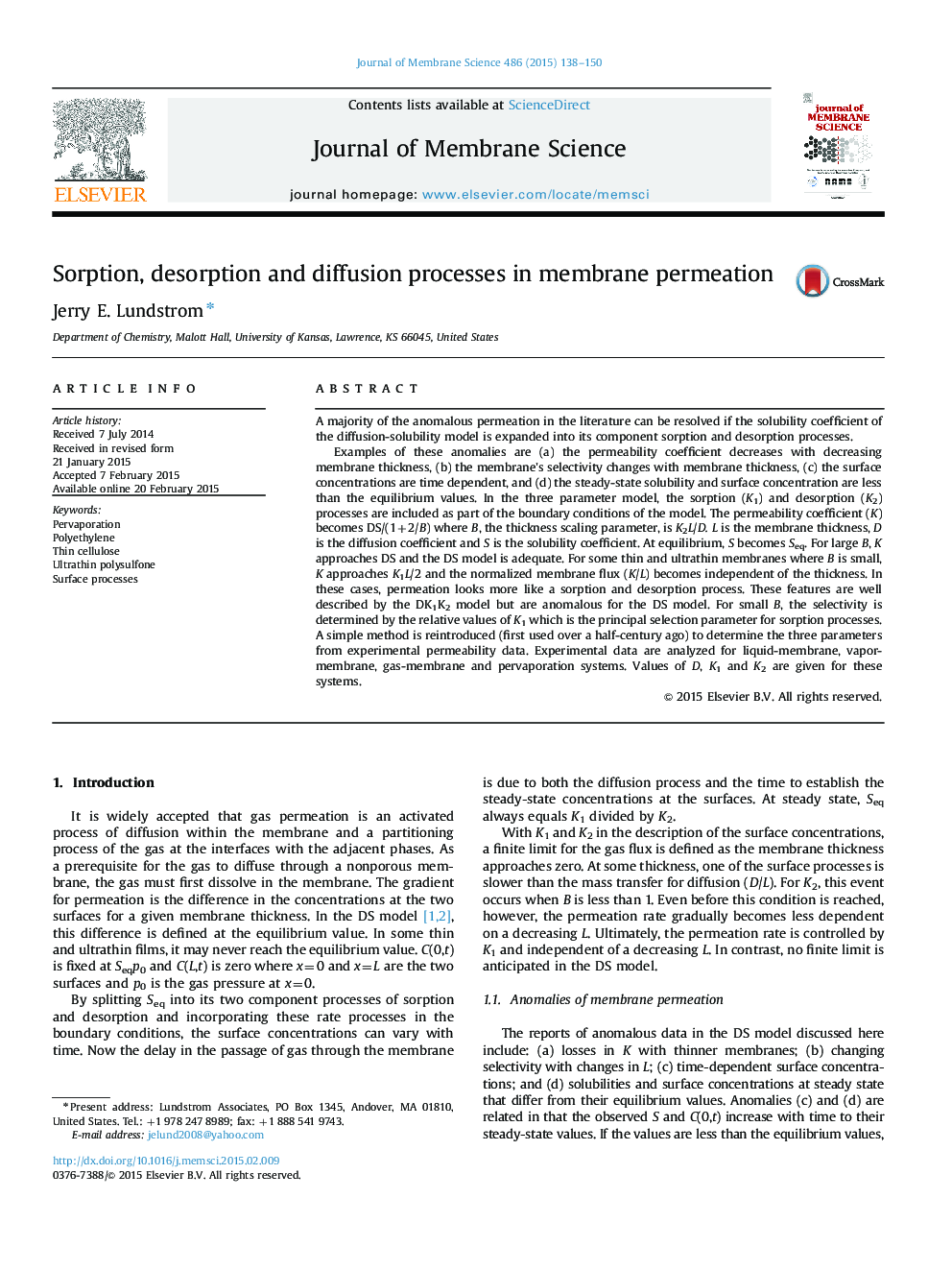| کد مقاله | کد نشریه | سال انتشار | مقاله انگلیسی | نسخه تمام متن |
|---|---|---|---|---|
| 633088 | 1456013 | 2015 | 13 صفحه PDF | دانلود رایگان |
• Upgraded boundary conditions eliminate four major anomalies.
• Salt addition enhances size selection in dialysis.
• Quantitative model for ultrathin Tg quenched films.
• Flux differences between pervaporation and vapor permeation resolved.
• Limiting flux of K1/2 predicted as L approaches zero.
A majority of the anomalous permeation in the literature can be resolved if the solubility coefficient of the diffusion-solubility model is expanded into its component sorption and desorption processes.Examples of these anomalies are (a) the permeability coefficient decreases with decreasing membrane thickness, (b) the membrane׳s selectivity changes with membrane thickness, (c) the surface concentrations are time dependent, and (d) the steady-state solubility and surface concentration are less than the equilibrium values. In the three parameter model, the sorption (K1) and desorption (K2) processes are included as part of the boundary conditions of the model. The permeability coefficient (K) becomes DS/(1+2/B) where B, the thickness scaling parameter, is K2L/D. L is the membrane thickness, D is the diffusion coefficient and S is the solubility coefficient. At equilibrium, S becomes Seq. For large B, K approaches DS and the DS model is adequate. For some thin and ultrathin membranes where B is small, K approaches K1L/2 and the normalized membrane flux (K/L) becomes independent of the thickness. In these cases, permeation looks more like a sorption and desorption process. These features are well described by the DK1K2 model but are anomalous for the DS model. For small B, the selectivity is determined by the relative values of K1 which is the principal selection parameter for sorption processes. A simple method is reintroduced (first used over a half-century ago) to determine the three parameters from experimental permeability data. Experimental data are analyzed for liquid-membrane, vapor-membrane, gas-membrane and pervaporation systems. Values of D, K1 and K2 are given for these systems.
Journal: Journal of Membrane Science - Volume 486, 15 July 2015, Pages 138–150
